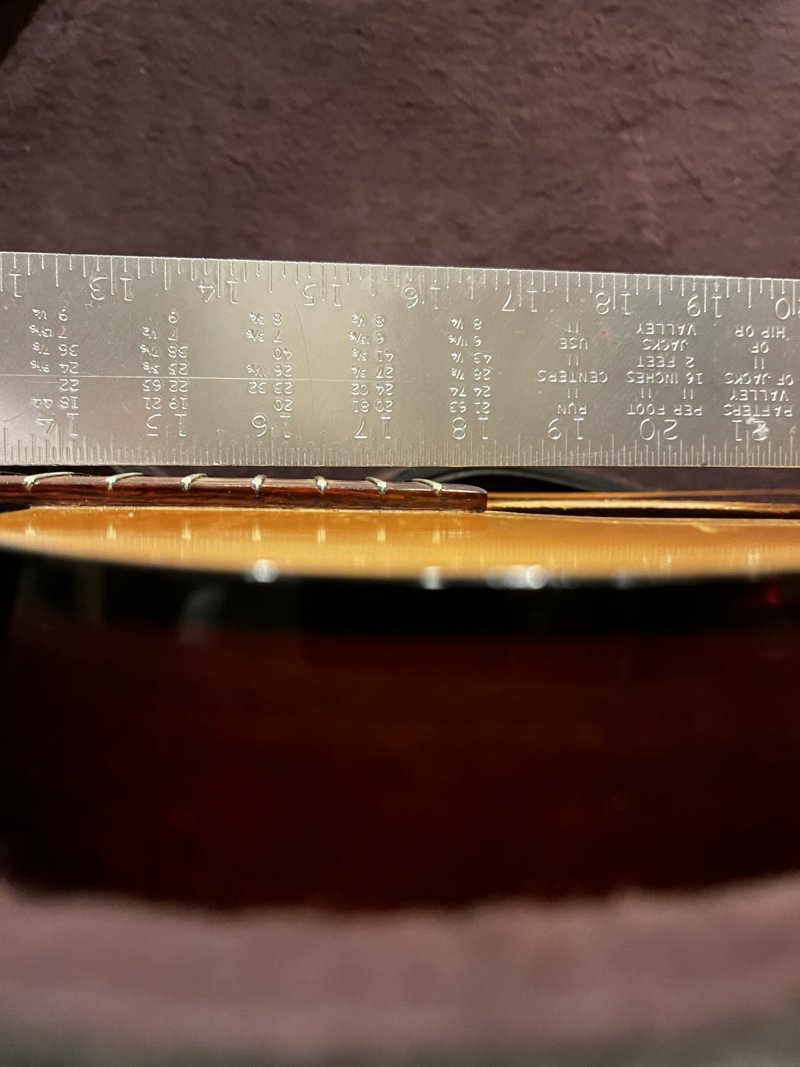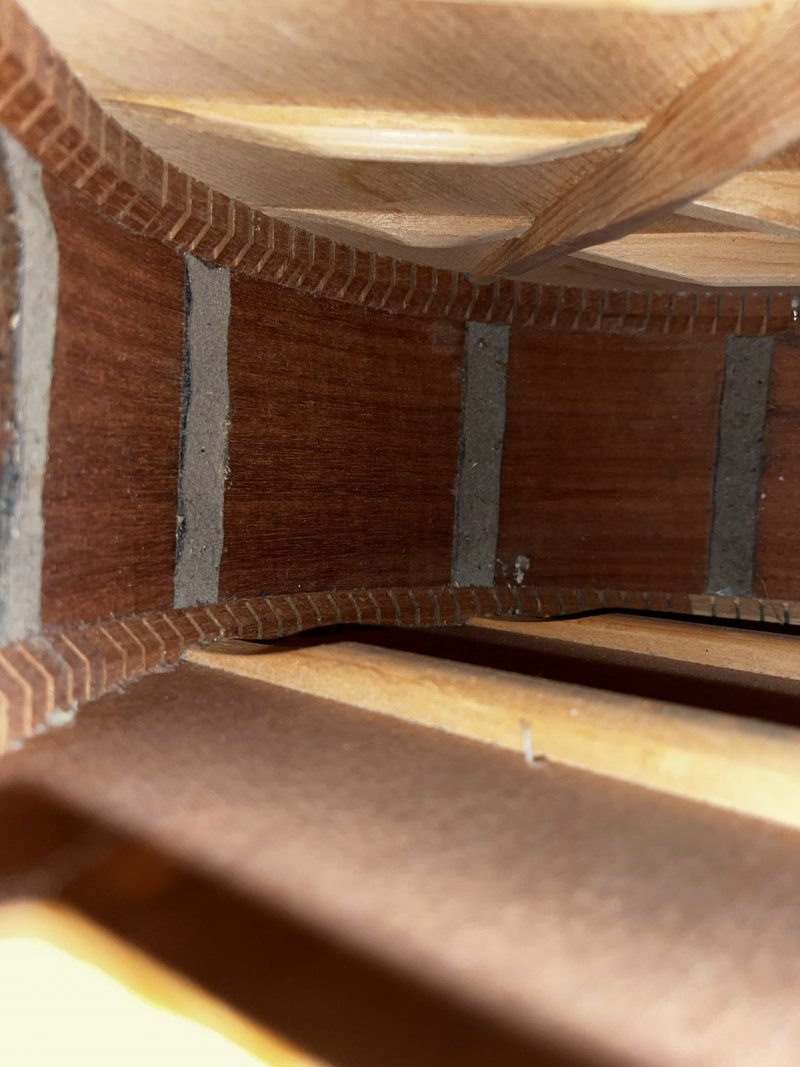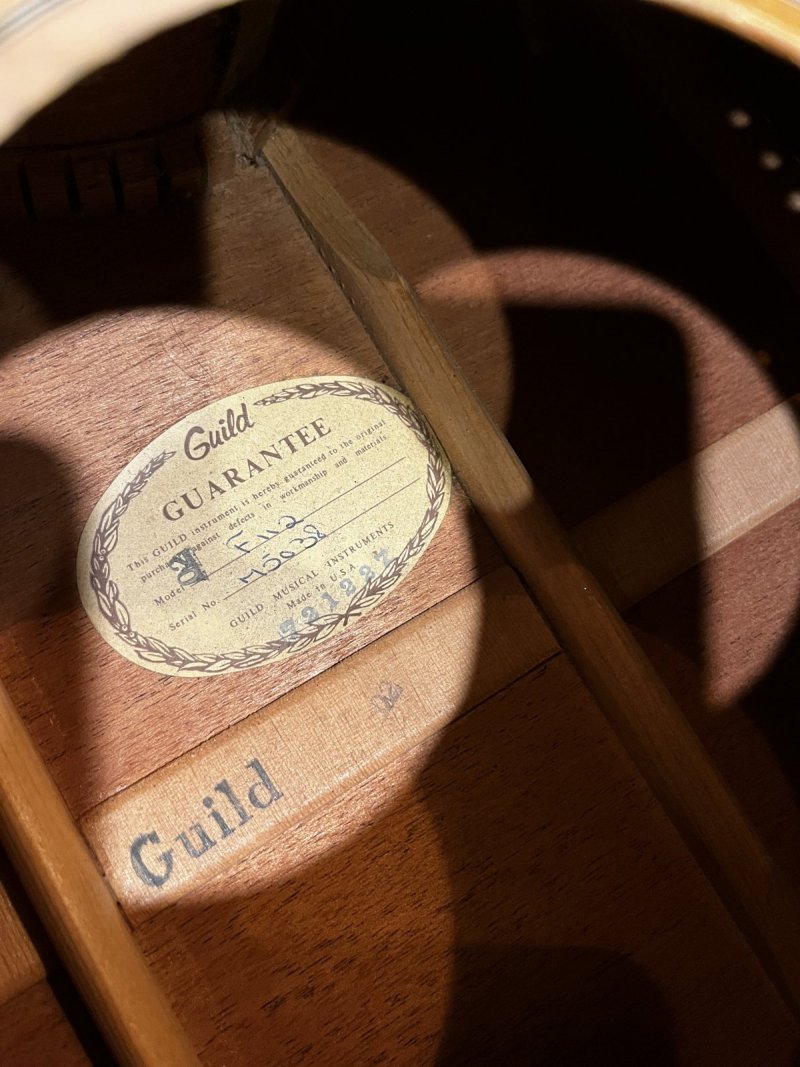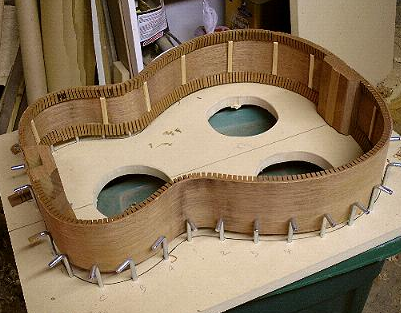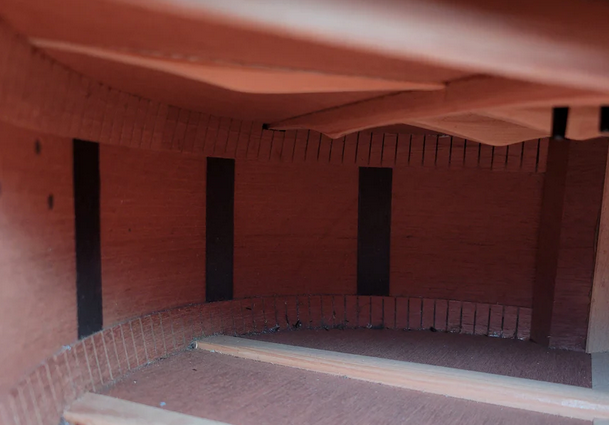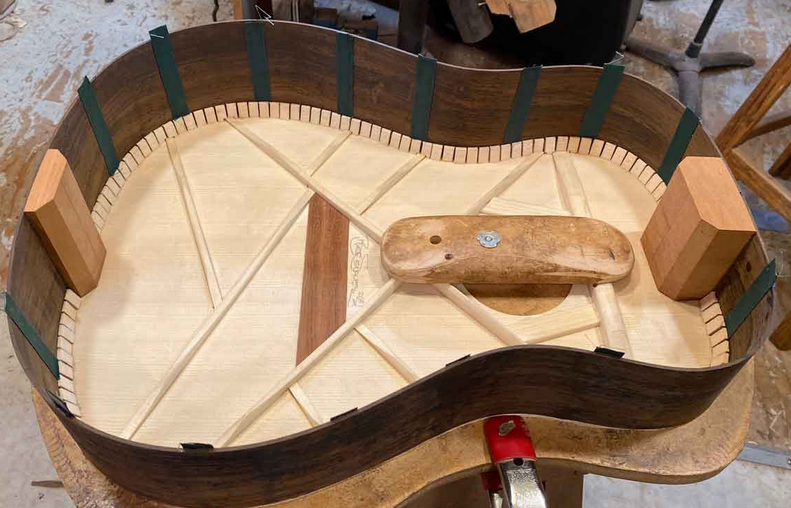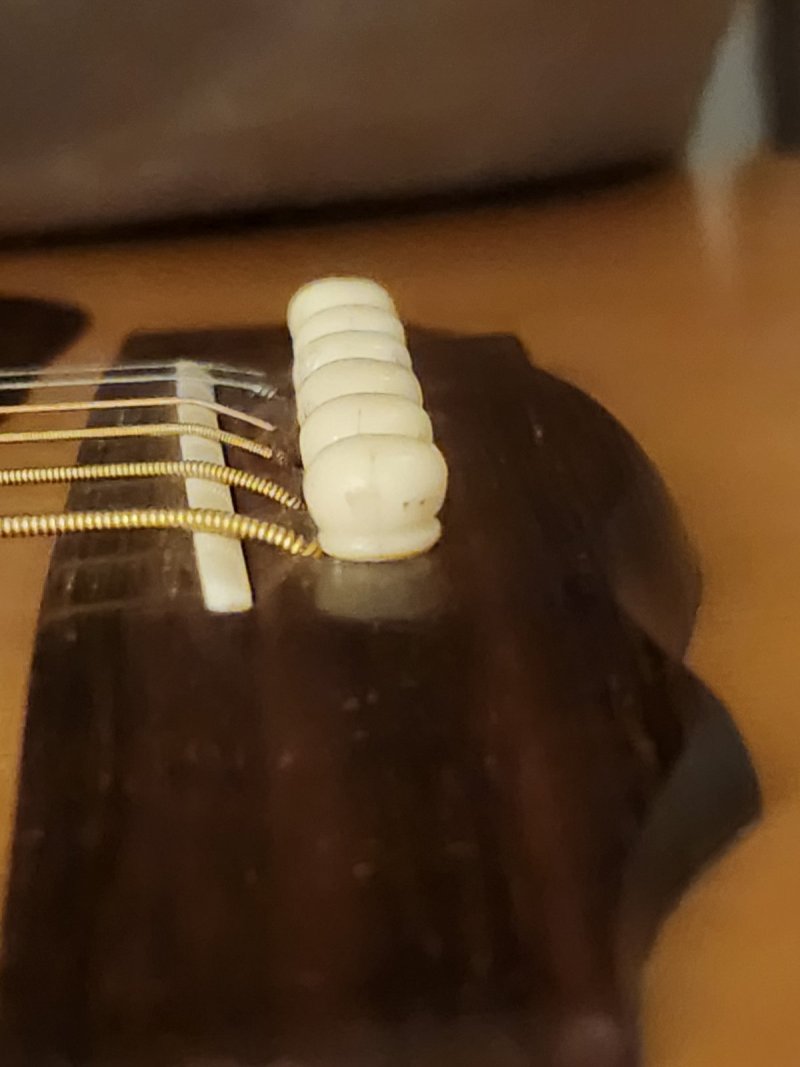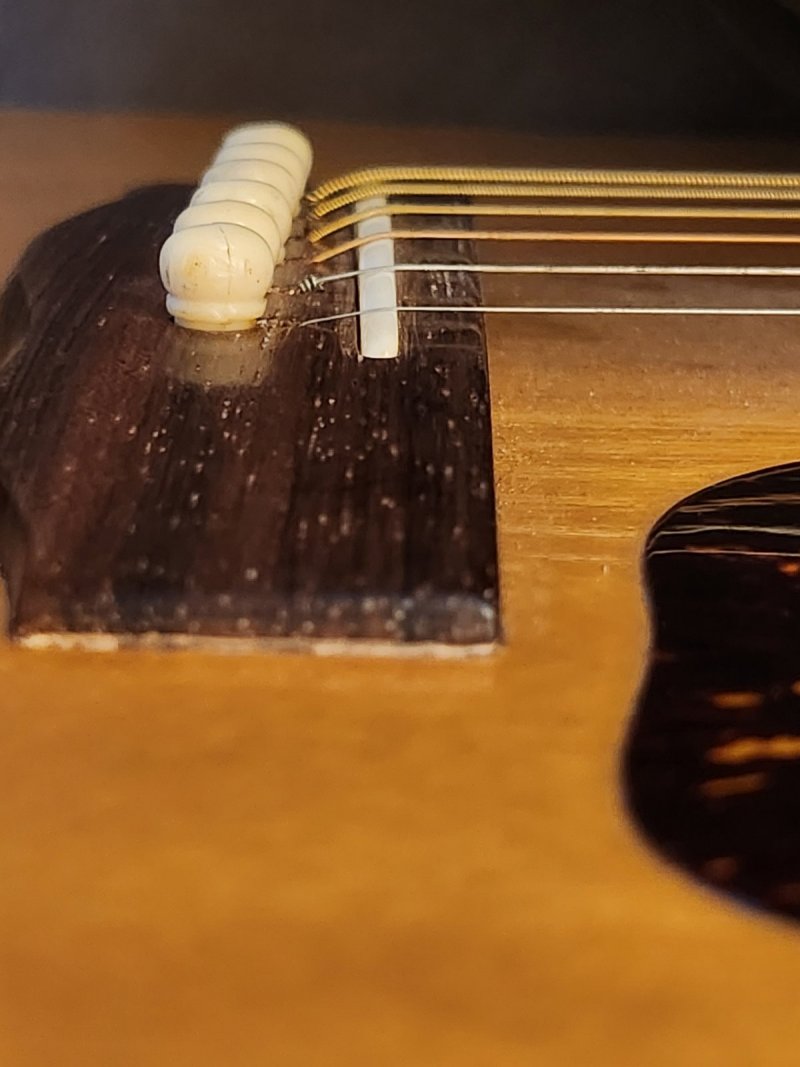Central Florida Folkie
Member
Good Morning, Friends:
I’ll do a thorough first impression post on this guitar later today after I get it home, restring it and put bone pins in it. But for now, I need some of your expert guidance and input on a couple of things:
1. With a straight edge, the neck runs nice and straight and the straight edge lands right at the top of the bridge (hooray!). However, around the 14th fret the neck starts to dip down into to the soundhole. You can see that clearly in the pics. Is this something to worry about? Not worry about? Get fixed?
2. Inside the body, all around, there are these strips. I’ve never seen these on a guitar before. Any idea what they are and what they’re for?
3. I already know the answer to this, but I thought I’d post the label anyway, since it indicates that this was a factory second way back when and has a “birthday stamp” on it which I don’t believe Guild did for a very long time, so I love that this one has it and lets me know that I had turned four years old eleven days prior to the completion of this guitar on 12/27/72.
I would love to know your thoughts on items 1 & 2, Community. I eagerly await your wisdom!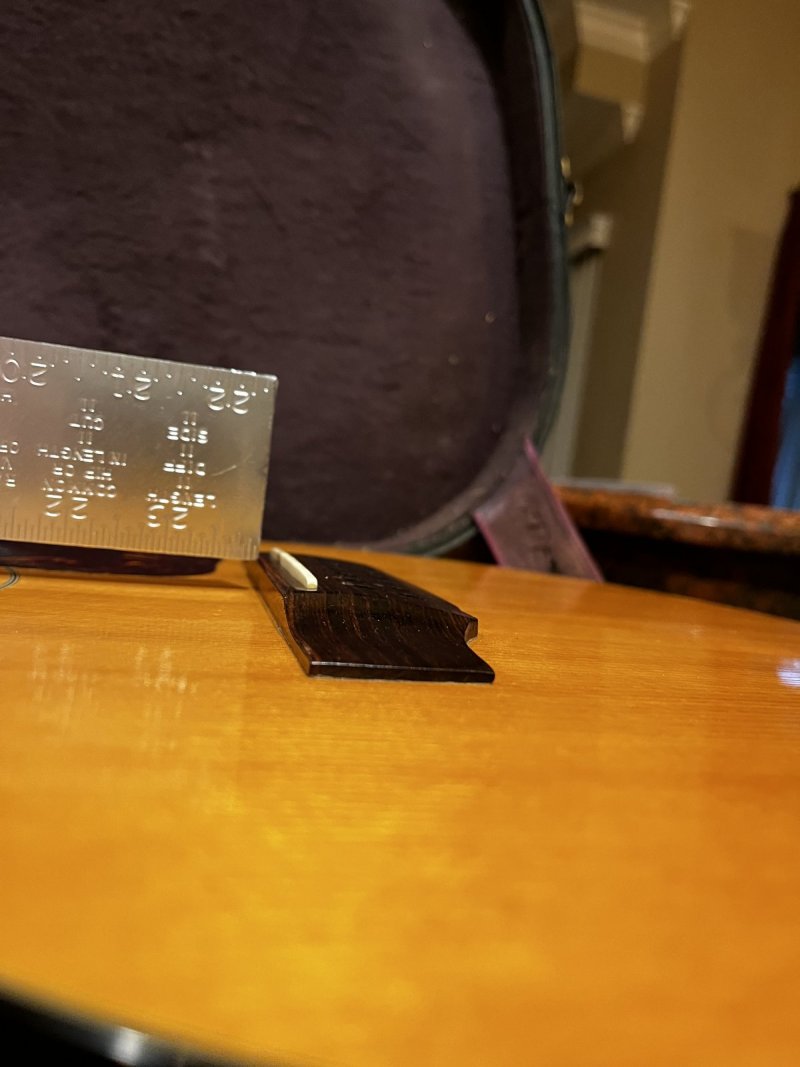
I’ll do a thorough first impression post on this guitar later today after I get it home, restring it and put bone pins in it. But for now, I need some of your expert guidance and input on a couple of things:
1. With a straight edge, the neck runs nice and straight and the straight edge lands right at the top of the bridge (hooray!). However, around the 14th fret the neck starts to dip down into to the soundhole. You can see that clearly in the pics. Is this something to worry about? Not worry about? Get fixed?
2. Inside the body, all around, there are these strips. I’ve never seen these on a guitar before. Any idea what they are and what they’re for?
3. I already know the answer to this, but I thought I’d post the label anyway, since it indicates that this was a factory second way back when and has a “birthday stamp” on it which I don’t believe Guild did for a very long time, so I love that this one has it and lets me know that I had turned four years old eleven days prior to the completion of this guitar on 12/27/72.
I would love to know your thoughts on items 1 & 2, Community. I eagerly await your wisdom!

Attachments
Last edited:
